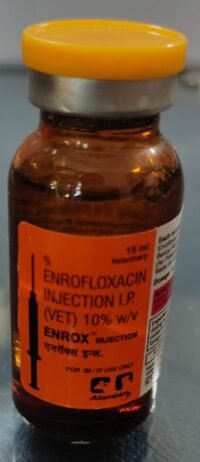Tetracycline hydrochloride I.P. 1000 mg
Pharmacology and Mechanism of Action
Oxytetracycline is usually bacteriostatic. It has a broad spectrum of activity including gram-positive and
gram-negative bacteria, some protozoa, Rickettsiae, and Ehrlichiae. Although oral preparations are available, oral absorption is poor. After IM injection in cattle the half-life is approximately 21 hours, with a maximum concentration (CMAX) of 5.6 mcg/mL.
Indications and Clinical Uses
Oxytetracycline is used to treat infections of the respiratory tract (pneumonia), urinary tract, soft tissues, and dermis. It is used for infections caused by a wide spectrum of bacteria, except that resistance is common among gram-negative bacilli of enteric origin and staphylococci. The doses have been as high as 50-70 mg/kg IV q48h.
Adverse Reactions and Side Effects
Tetracyclines may cause renal tubular necrosis at high doses, but this is rare with recommended doses. Tetracyclines can affect bone and teeth formation in young animals. Tetracyclines have been implicated in drug fever in cats. Hepatoxicity may occur at high doses in susceptible individuals.
Use cautiously in young animals because teeth discoloration is possible. Avoid injection volumes for IM greater than 10 mL per site in cattle and greater than5 mL in pigs.
Drug Interactions
Tetracyclines bind to compounds containing calcium, which decreases oral
absorption, Do not mix with solutions that contain iron, calcium, aluminum, or
magnesium.
Dosage:
Large Animal: 2-3 boli per day orally Small Animal: 1/2-1 bolus per day orally Duration: 3-5 days or as recommended by the Veterinarian Pack: Box of 5 x 2 ‘s boli



